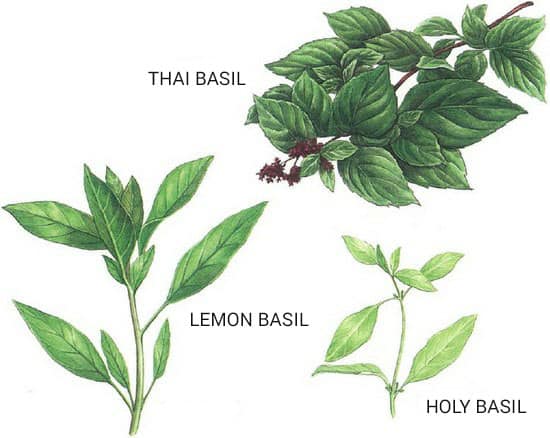
Thai cuisine utilises three main type of basil: Thai basil, holy basil, and lemon basil. A fourth less common basil is tree basil. The latter two are the most difficult to find outside of Thailand and the first in the list the most commonly available. Thais treat them as separate entities and so these basils are generally not interchangeable with each other. The fresher the leaves, the more you'll get out of them; the flavours will dull over time (especially with regards to Lemon basil).
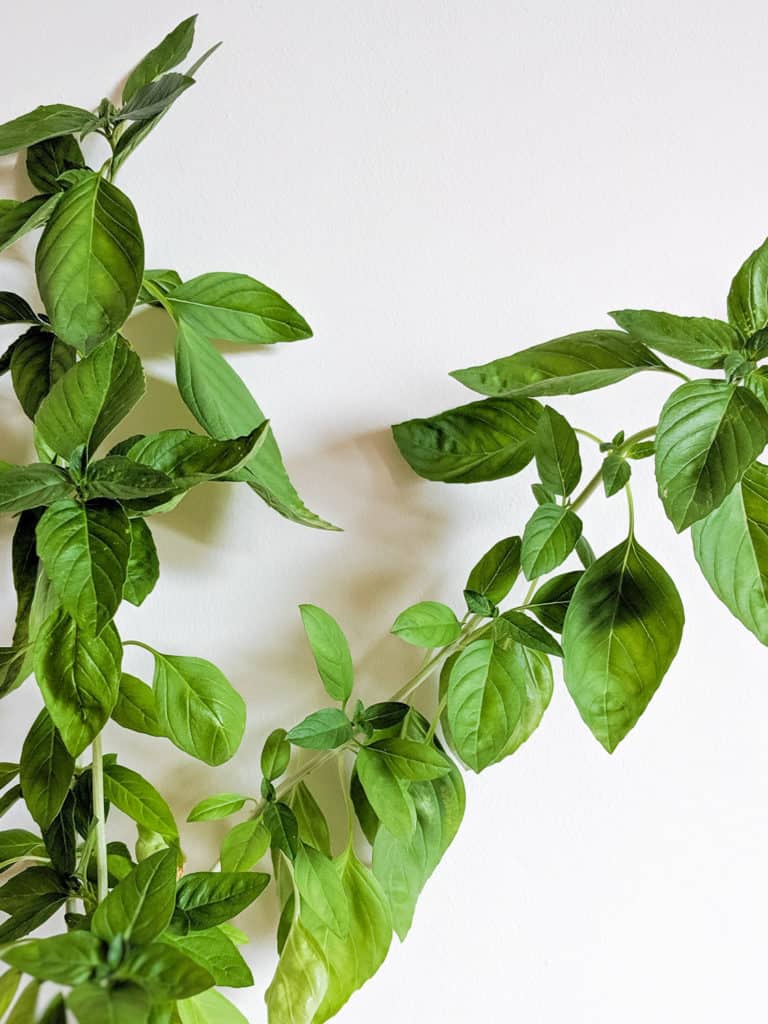
Thai basil (horapha โหระพา)
A variety of sweet basil (ocimum basilicum var. thyrsiflora)
Thai basil looks similar to your everyday Italian basil but with purple stems, and the flavour is of bold aniseed and liquorice. If you can't find this, you can substitute with Italian basil, although the flavour will be markedly different. A big difference between Thai and Italian basils is the the flavour of Thai basil will hold its flavour under prolonged high heat.
Some Thai dishes that utilise Thai basil
- Kaeng keow waan (green curry)
- Kaeng phet pet yaang (red curry with roast duck – easily veganised)
- Kaeng panaeng (Panang curry)
- Fresh spring rolls
- Nam prik (Thai relishes), as an accompaniment with other vegetables and herbs
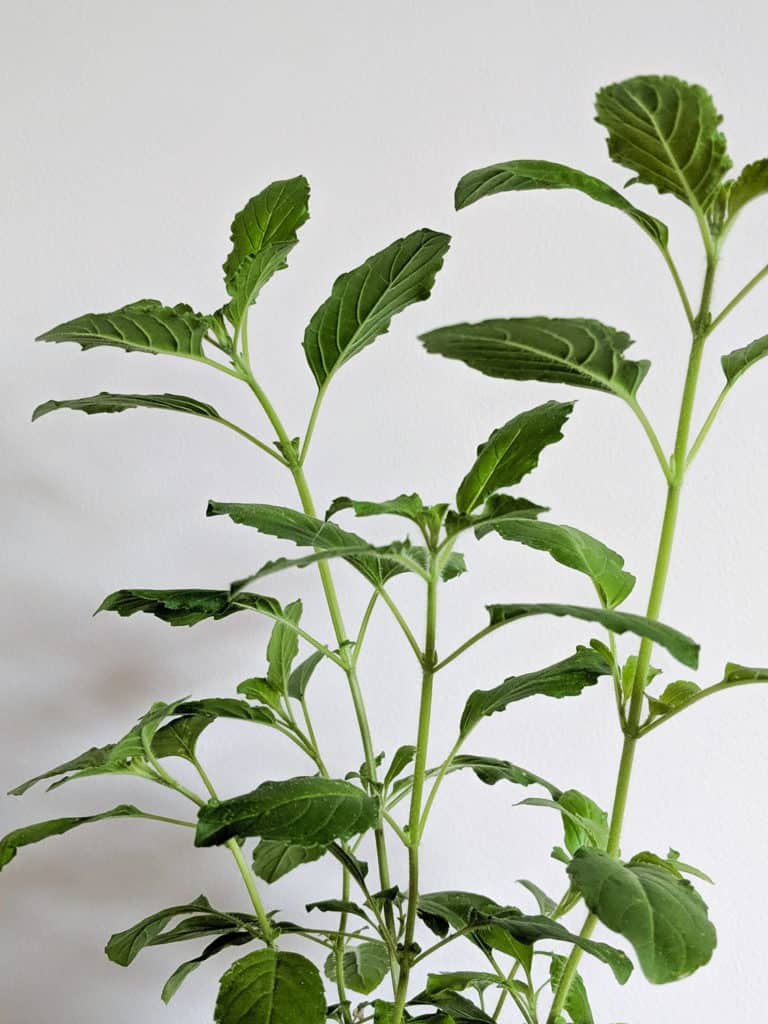
Holy Basil (gaprao กะเพรา, กระเพรา)
Ocimum tenuiflorum
This is a variety with jagged green leaves and has a peppery flavour with a grassy clove like undertone. Holy basil is a key ingredient in pad kaprow, which translates literally to fried holy basil. Always enquire at Thai restaurants when ordering this dish to see that they don't use Thai basil – this is a good way to judge the reliability of the rest of a menu!
Two types of holy basil are used in Thailand: red holy basil and white holy basil. The difference between white and red holy basil is the latter is more pungent.
Holy basil pairs well with chillies as the herb heightens spiciness.
This basil may also be transliterated as krapow, gaprao, gaprow, kraprow, gaphrao, among others.
Some Thai dishes that utilise holy basil
- Pad kaprow (holy basil stir fry)
- Gaeng pa (jungle curry)
- Pad cha (spicy stir fry with fresh green peppercorns)
- Plaa dook grop pad ped (easily veganised crispy fried fish dish)
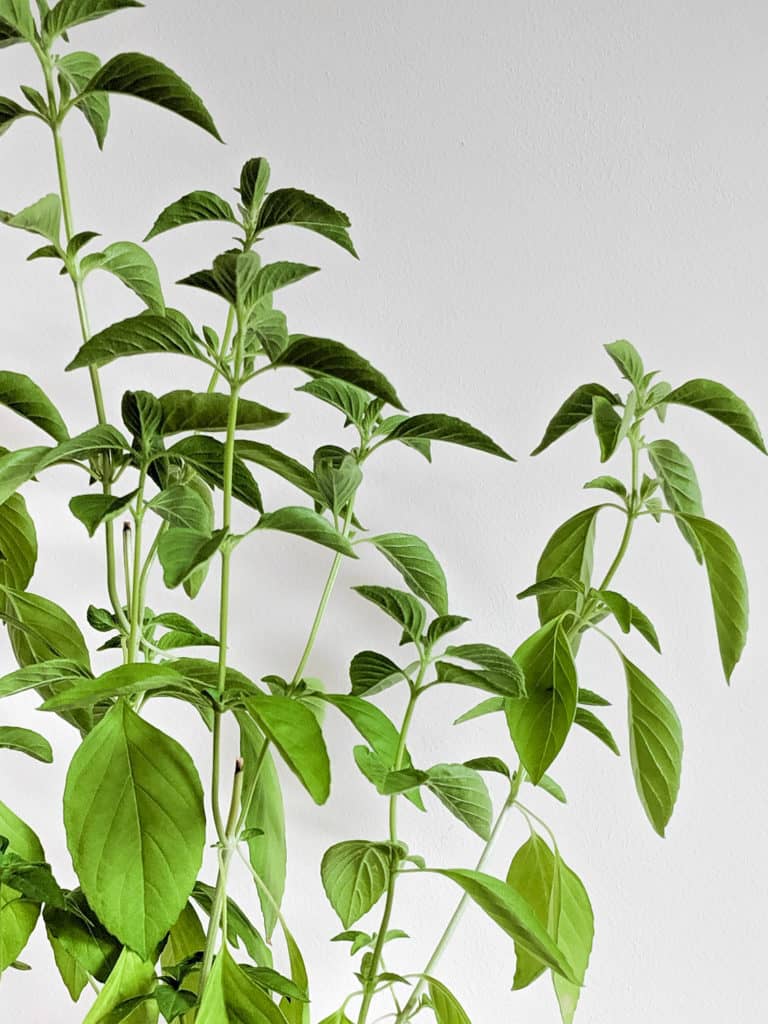
Lemon Basil (Maenglak แมงลัก)
Ocimum americanum
Also known as hoary basil, this is the most delicate and least utilised (outside of Thailand) of the three, and needs to be used fairly quickly as the aroma will dull after a couple of days. In the dishes where it's used (e.g. kanom jin nam yaa) it plays an important role in the overall flavour. I've found a worthy substitute to be Vietnamese lemon balm (cockscomb mint), which you can find in some Vietnamese shops in East London (try Star Night, among others). If you can't find either, omit it from the recipe without replacement.
Some Thai dishes that utilise lemon/hoary basil
- Kaeng liang (herbal vegetable soup)
- Kanom jeen nam ya (red curry noodles)
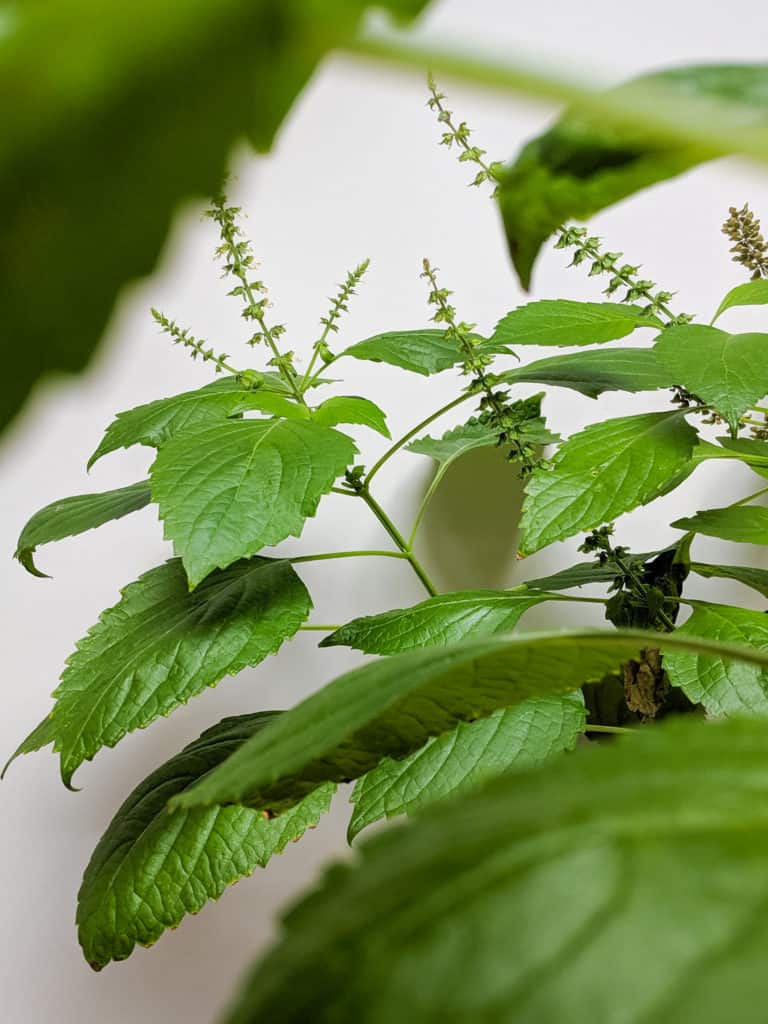
Tree Basil (yee raa ยี่หร่า, gaprao kwai กระเพาวาย)
Ocimum gratissimum
Also known as African basil, clove basil, or buffalo basil in some parts of Thailand, this unique leaf is difficult to find in the UK. You will have luck more luck finding it at Nigerian supermarkets than you will at Thai grocers. The scent is a cross between cloves and bubble gum. In Thai cuisine this is used in curries, stir-fries, and as a herb to eat alongside meals.
Note the name yee raa refers to cumin in Thai, so when you do see it sold by Thai grocers it is often confusingly labelled cumin leaf. These are two separate plants.
Most of the Thai recipes that call for buffalo basil fall into the category of aahaan boraan, or ancient foods.
Some Thai dishes that utilise tree basil
- Pad pet bai yee rai (spicy stir fry with tree basil)
- Gaeng pa bai yee raa (jungle curry with tree basil leaves)
- Different types of curry (mainly red but not always)
UK Availability
In London Thai basil is easily accessible in most well stocked East Asian supermarkets. You are likely to find it in Chinatown. Holy basil is a little trickier to find, but if you seek out a Thai supermarket and ring ahead, then you might have luck. Sometimes online retailers Thai Food Direct and Thai Food Shop have lemon basil in stock. They usually have Thai and holy basil as well. As mentioned, tree basil is trickier to find but some online Thai markets may sell it as cumin leaf. Your best chance of finding it is to look for scent leaf at a Nigerian grocer.


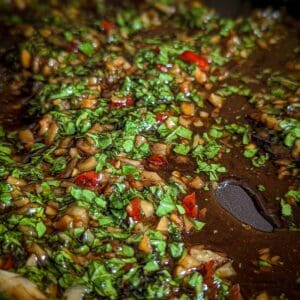
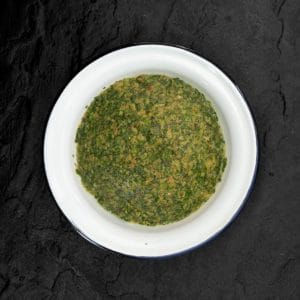

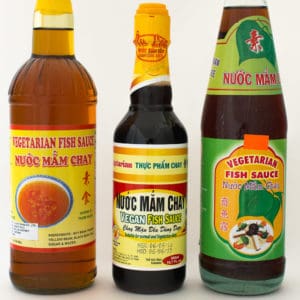
coconutandberries
I've really been enjoying learning about authentic Thai food! I love regular Thai basil and just buy it in Waitrose (it's sold with along with all the other "normal" herbs) but have never tried holy or lemon basil.
Kip
You can find holy basil sometimes in Chinatown or the Vietnamese shops in Hackney/Shoreditch, but lemon basil is next to impossible to source in the UK. There are a couple of places online that sell it sometimes (listed here: https://www.messyvegancook.com/2014/09/27/recommended-thai-cooking-resources-in-the-uk/)
coconutandberries
Thanks! Do you have any recs for vegan-friendly places to eat in Chinatown by the way? We ended up eating there last night but had no clue where was good.
Kip
Tokyo cafe is good. Jen cafe does some vegan options (so I've been told), and the street food dumpling guy across from there has a vegan vegetable one. Baozi Inn has some good stuff as well. It's been a few years since I've been, but the tofu flower soup thing was ace.
Amber
If you have even a small pot for growing, lemon basil seeds and plants are very easy to find. One of the first basil varieties I grew was lemon basil. Basil in general is very easy to grow, and I have never had any pests or diseases (I've been growing it for about 8 years now). Just set it in a small pot in full sun and water regularly. With 5 varieties, I have more basil than I can use all summer, even when I'm making pesto almost weekly. I was making pesto as Christmas gifts and dehydrating it for winter use.
Kip
I grow all of these too, but I wish I could say I didn't have problems with pests! I am constantly battling the return of whitefly. So frustrating!
Amorypaz
Thank you for the photos!! I have a plant that is a year old and another I have had for a years and nursed back from the brink two or three times. I simply called it Thai basil as well since I knew it wasn’t Lemon basil or Holy basil. Now I know. It is a tree basil. I live in the US or I would send you a bag of seed. I have several.
Bonus: muddle 8-10 smaller tree basil leaves in a glass with half a lemon and a tsp of sugar. Add one measure (2oz) of mild bourbon (Basil Hayden’s) and a half measure of Aperol. Shake well and double strain into a chilled coupe. The Double Eagle, as it is called, is a perfect summer tipple.
Kip
oh wwooooww thank you for that recipe! It sounds divine. You can also use the leaves to make a stir fry (like my pad kaprao recipe except use tree basil or a combination). I'm so excited to try that drink.
I reserve the right to improve malicious and trollish comments.